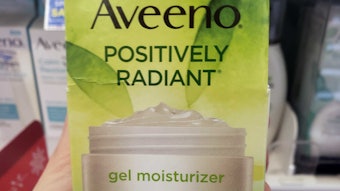
During the PCHi 2024 tradeshow and exhibition, to be held March 20-22 in Shanghai, LG H&H's senior researcher and project leader Byunghyun Kim will present on the anti-aging efficacy of NAD+ in skin care. Following is a sneak preview from Kim on why NAD+ is causing buzz in beauty.
Learn more by attending Session 1: International Conference on Frontier Technologies of Cosmetic Ingredients, sponsored by Cosmetics & Toiletries.
 Byunghyun Kim, LG H&H Co. Ltd.
Byunghyun Kim, LG H&H Co. Ltd.
What is NAD+ and why is it such a hot skin care ingredient right now?
Nicotinamide Adenine Dinucleotide (NAD+) is a coenzyme found in all cells of our body that plays a crucial role in various cellular metabolic processes. Specifically, NAD+ is involved in cellular energy production, DNA damage repair and cell signaling pathways, thereby contributing to delaying cellular aging and extending lifespan.
NAD+ is being explored for its potential to combat various age-related issues beyond skin. Amidst the growing interest in anti-aging, NAD+ has emerged as a key molecule in senescence reversal, garnering significant attention within the scientific community. This overall interest in NAD+ for health spills over to skin care, making it a trendy ingredient.
See related: [video] NAD+ and Longevity as the Latest Anti-aging Target
How does NAD+ work? What does it do in skin?
It is known that as aging progresses, the amount of NAD+ in the body gradually decreases, in the context of the whole system and specific tissues. Otherwise, numerous recent studies have demonstrated that supplementation with NAD+ could reverse the signs of aging and extend lifespan in some experimental models. This is believed to be due to the activation of sirtuins (also known as "longevity genes"), enhancing cellular energy metabolism and rescuing DNA damages.
Though previous research has elucidated how NAD+ ameliorates some specific degenerative conditions such as diabetes mellitus (DM), sarcopenia or Alzheimer's disease, the beneficial effects of NAD+ in the skin are not well demonstrated yet. This is why we are intensively studying NAD+ for cosmetic uses. One of our astonishing findings is that application of NAD+ can rejuvenate the old skin cells and counteract or reverse the progress of intrinsic and extrinsic aging.
How does it fit current market trends for anti-aging ingredients?
NAD+ aligns well with several key trends in the anti-aging ingredient market. Consumers are increasingly interested in preventative strategies to maintain health and well-being, rather than simply treating disease after it arises. Research on NAD+ suggests it may play a role in cellular rejuvenation and lifespan extension, aligning with this preventative approach. Demand is surging for natural ingredients over synthetic ones in anti-aging products. NAD+, being a naturally occurring molecule found in the body, is highly appealing to this desire for natural solutions.
What might be some future iterations of NAD+? Or what unknown areas could uncover potential additional applications?
As mentioned above, the detailed mechanisms are not clearly identified. To understand and utilize NAD+ as an anti-aging ingredient for cosmetics, comprehensive, extensive and in-depth studies are required; from in vitro molecular biology to actual human application research. Some critical drawbacks of NAD+, such as poor transdermal delivery efficiency and chemical instability, should be also improved by formulation technologies.
How does NAD+ shape the current landscape for anti-aging ingredients?
NAD+ is a new and innovative ingredient that has the potential to transform the anti-aging skin care market. Unlike other anti-aging ingredients that target specific concerns, NAD+ works at a cellular level to address multiple hallmarks of aging simultaneously. This makes it a highly effective and versatile ingredient for those seeking to achieve youthful and radiant skin.
Hear more during the PCHi 2024 tradeshow and exhibition.










